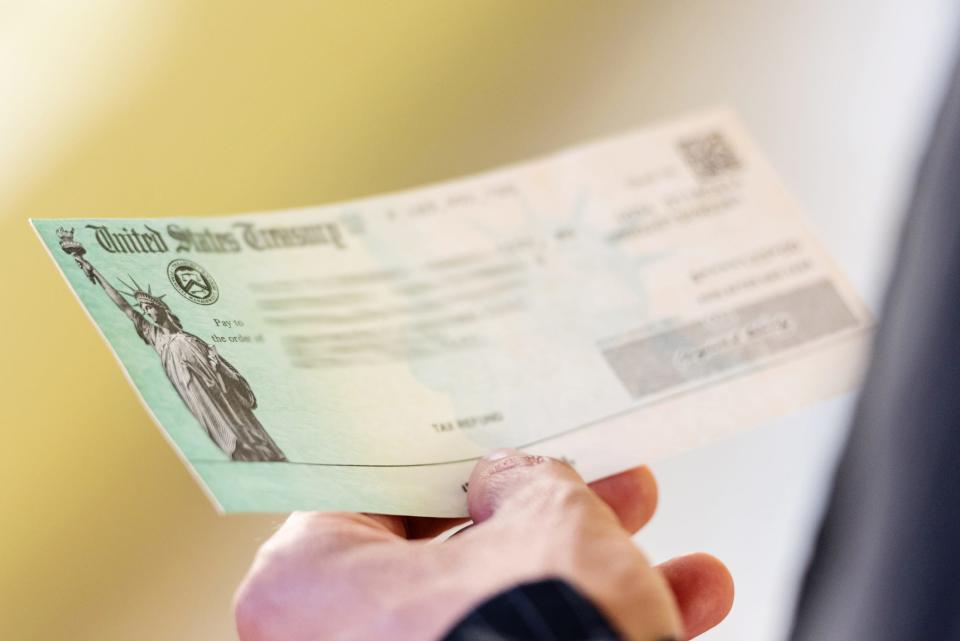IRS says average tax refunds up by 13.7% so far. Is your refund better or worse?
Tax filers have roughly six weeks to go to meet the April 18 tax deadline for most taxpayers, but so far the Internal Revenue Service has received more than one third of all the individual returns it expects to get in 2022.
The average tax refund was $3,401 for returns processed through March 4, based on the latest IRS data. That's up $411 or 13.7% from a year ago.
The IRS has issued nearly 38 million refunds so far totaling $129.2 billion.
If your 2021 tax return has no issues, the IRS said most people can expect to receive a refund within 21 days of when they file electronically if they choose direct deposit. It’s possible, the IRS warns, that your tax return may require additional review and take longer.
What's important to note is that the IRS began processing returns roughly three weeks earlier this year than it did a year ago. This year, the tax season began Jan. 24.
As a result, comparisons can be difficult. Weekly numbers also can shift dramatically early in the season, as filing patterns also change, according to the IRS.
Last year's tax filing deadline for 2020 returns was extended, for example, to May 17, 2021.

The IRS reported Friday that it has received 54.7 million individual income tax returns. That's down slightly by 1.7% for the same time frame a year ago.
The IRS has processed a bit more than 53 million returns, up 8.3% from a year ago.
Average refunds have edged down a bit as we moved into March. The average refund, for example, had been as high as $3,536 for earlier returns processed through Feb. 18.
More: Tax refunds hit average $3,536 for millions of early filers
More: IRS holds a special, limited Saturday event to offer face-to-face help
More: Some tax filers shocked by smaller than expected refunds: What could trigger decrease
The IRS also noted that direct deposit refund data includes refunds for returns received in the prior year or the current year but processed in 2022 requesting a direct deposit.
The average for direct deposit refunds was $3,462 through March 4 — up 14% or $426. The bulk of refunds issued so far are via direct deposit.
The IRS has been dealing with a backlog that built up involving millions of returns filed last year.
Some tax breaks and rules can change from year to year and influence the size of the refund for individual tax filers.
One new tax break on the 2021 return has helped some early filers, including lower income working households with no children. In 2021, the maximum Earned Income Tax Credit for those without qualifying children is $1,502, up from $538 in 2020.

Some people who fear that they owe taxes often delay preparing their returns and may file closer to the April 18 deadline.
Tax professionals warn that a variety of reasons could lead to lower refunds — or tax bills — for some people this year. They include:
Many people went back to work last year after the short, but deep, recession in 2020. Many who are back working are seeing higher wages, which even could put them in a higher tax bracket than the prior year.
The stock market performed well and many mutual funds paid out larger than normal capital gains and income distributions if the investor held the fund in a taxable account. This is income that people don't see in their bank accounts.
Unemployment compensation is taxable in 2021 and you could end up paying taxes on jobless benefits now. Last tax season, millions of people benefited from a temporary tax break that excluded a limited amount of unemployment compensation for those who qualified on 2020 returns.
The advance child tax credit put money into wallets in 2021. Now, many people don't realize the money was an "advance" of an expanded credit for 2021.
Some taxpayers aren't seeing an interest deduction for student interest for federal student loans because they didn't make any payments in 2021. (If you paid more than $600 in interest in 2021, you will automatically receive form 1098-E in the mail or by email.)
Contact Susan Tompor: stompor@freepress.com. Follow her on Twitter @tompor. To subscribe, please go to freep.com/specialoffer. Read more on business and sign up for our business newsletter.
This article originally appeared on Detroit Free Press: IRS issues 38 million refunds. How big is the average in early March?

 Yahoo Autos
Yahoo Autos 